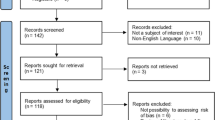Abstract
Obstructive sleep apnea is a common disorder and affects approximately 4% of middle-aged men and 2% of middle-aged women. Obstructive sleep apnea is clearly associated with obesity, with more than 50% of patients having a body mass index > 30 kg/m2. Substantial evidence identified obstructive sleep apnea as risk factor not only for excessive daytime sleepiness and road traffic accidents, but also for increased cardiovascular morbidity and mortality. In addition, all kinds of arrhythmias have been observed in patients with sleep apnea ranging from asymptomatic sinus bradycardia to sudden cardiac death. Approximately 5–10% of patients with obstructive sleep apnea show marked apnea-related bradyarrhythmias due to enhanced vagal tone and pronounced hypoxia. Therapeutic options in obese patients with obstructive sleep apnea include consequent weight loss and nasal continuous positive airway pressure (CPAP) ventilation as the therapy of first choice. Weight reduction and effective nasal CPAP therapy significantly decrease cardiovascular morbidity and mortality and eliminate sleep-related bradyarrhythmias in 80–90% of patients obviating the need for pacemaker implantation in these patients.
Zusammenfassung
Obstruktive Schlafapnoe ist eine häufige Störung, die bei ca. 4% aller erwachsenen Männer und 2% aller erwachsenen Frauen gefunden wird. Obstruktive Schlafapnoe zeigt eine klare Assoziation zu Adipositas, wobei über die Hälfte der Patienten einen Body-Mass-Index von > 30 kg/m2 aufweist. Obstruktive Schlafapnoe ist nicht nur mit einer ausgeprägten Tagesmüdigkeit und mit vermehrten Verkehrsunfällen vergesellschaftet, sondern geht auch mit einer erhöhten kardiovaskulären Morbidität und Mortalität einher. Darüber hinaus wurden Rhythmusstörungen aller Art bei Patienten mit Schlafapnoe gefunden, von asymptomatischen Sinusbradykardien bis hin zum plötzlichen Herztod. Etwa 5–10% aller Patienten mit Schlafapnoe zeigen ausgeprägte apnoebezogene Bradyarrhythmien infolge eines gesteigerten Vagustonus und einer schweren Hypoxie. Die Behandlung adipöser Patienten mit obstruktiver Schlafapnoe besteht neben einer konsequenten Gewichtsreduktion in einer nasalen CPAP-Beatmung (kontinuierlicher positiver Atemwegsdruck) als Therapie der ersten Wahl. Durch eine Gewichtsreduktion und eine effektive nasale CPAP-Therapie können die kardiovaskuläre Morbidität und Mortalität deutlich gesenkt werden, und schlafbezogene Bradyarrhythmien verschwinden bei 80–90% aller Patienten, so dass auf eine Schrittmacherimplantation verzichtet werden kann.
Similar content being viewed by others
Author information
Authors and Affiliations
Corresponding author
Rights and permissions
About this article
Cite this article
Grimm, W., Becker, H.F. Obesity, Sleep Apnea Syndrome, and Rhythmogenic Risk. Herz 31, 213–218 (2006). https://doi.org/10.1007/s00059-006-2800-3
Issue Date:
DOI: https://doi.org/10.1007/s00059-006-2800-3




